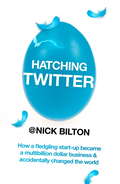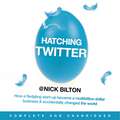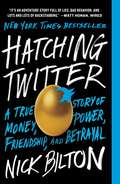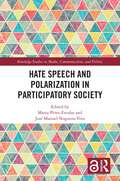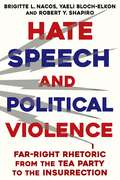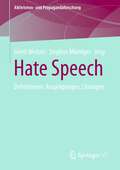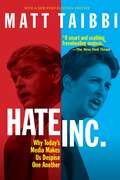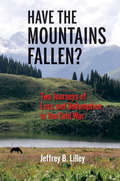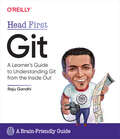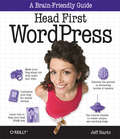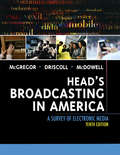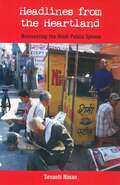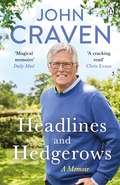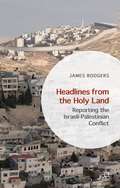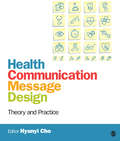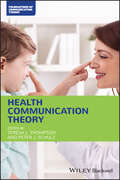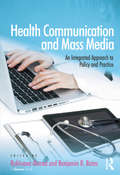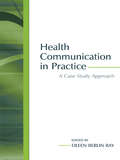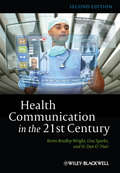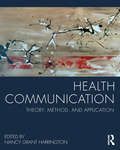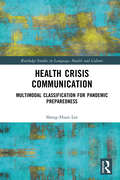- Table View
- List View
Hassrede und Freiheit der Meinungsäußerung: Der Schutzbereich der Meinungsäußerungsfreiheit in Fällen demokratiefeindlicher Äußerungen nach der Europäischen Menschenrechtskonvention, dem Grundgesetz und der Charta der Grundrechte der Europäischen Union (Beiträge zum ausländischen öffentlichen Recht und Völkerrecht #278)
by Anna Katharina StruthDieses Buch analysiert den grundrechtlichen Schutzbereich der Garantien der Meinungsäußerungsfreiheit in den Grundrechtskatalogen der EMRK, des Grundgesetzes und der Grundrechtecharta der EU. Das Werk untersucht, inwieweit Hassreden und vergleichbare demokratiefeindliche Äußerungen vom Schutzbereich der Meinungsäußerungsfreiheit umfasst sind. Die Autorin setzt sich mit der zu diesen Äußerungen ergangenen Rechtsprechung der zuständigen Gerichte auseinander. Sie kommt über ausführliche Auslegungserwägungen zu den relevanten Bestimmungen zum Ergebnis, dass die Äußerungen, auch wenn sie einen Grundrechtsmissbrauch darstellen, im Schutzbereich der Meinungsäußerungsfreiheit liegen und ihr Verbot einen rechtfertigungsbedürftigen Eingriff in das Grundrecht darstellt. Diese Schlussfolgerung wird mit der Feststellung verbunden, dass die Anforderungen an die Rechtfertigung eines solchen Eingriffs wegen der in diesen Fällen typischerweise vorliegenden Interessenlage regelmäßig erfüllt werden können.
Hatching Twitter: A True Story of Money, Power, Friendship and Betrayal
by Nick Bilton'A tale of Machiavellian plots and coups d'etat, it's just all so gripping' Chris Evans, BBC Radio 2THE ULTIMATE 21ST CENTURY BUSINESS STORYSince 2006, Twitter has grown from the accidental side project of a failing internet start-up, to a global icon that by 2013 had become an $11.5bn business. But the full story of Twitter's hatching has never been told before.In his revelatory new book, New York Times journalist Nick Bilton takes readers behind the scenes of Twitter as it grew at exponential speeds, and inside the heads of the four hackers who created it: ambitious millionaire Evan Williams; tattooed mastermind Jack Dorsey; joker and diplomat Biz Stone; and Noah Glass, the shy but energetic geek who invested his whole life in Twitter, only to be kicked out and expunged from the company's official history.Combining unprecedented access with exhaustive investigative reporting, and drawing on hundreds of sources, documents and internal emails, New York Times' bestseller HATCHING TWITTER is a blistering drama of betrayed friendships and high-stakes power struggles. A business story like no other, it will shock, expose and inspire.
Hatching Twitter: A True Story of Money, Power, Friendship and Betrayal
by Nick BiltonTHE ULTIMATE 21ST CENTURY BUSINESS STORYEv told Jack he had to 'chill out' with the deluge of media he was doing. 'It's bad for the company,' Ev said. 'It's sending the wrong message.' Biz sat between them, watching like a spectator at a tennis match.'But I invented Twitter,' Jack said.'No, you didn't invent Twitter,' Ev replied. 'I didn't invent Twitter either. Neither did Biz. People don't invent things on the Internet. They simply expand on an idea that already exsists.'Since 2006, Twitter has grown from the accidental side project of a failing internet start-up, to a global icon that by 2013 had become an $11.5bn business. But the full story of Twitter's hatching has never been told before.In his revelatory new book, New York Times journalist Nick Bilton takes readers behind the scenes of Twitter as it grew at exponential speeds, and inside the heads of the four hackers who created it: ambitious millionaire Evan Williams; tattooed mastermind Jack Dorsey; joker and diplomat Biz Stone; and Noah Glass, the shy but energetic geek who invested his whole life in Twitter, only to be kicked out and expunged from the company's official history.Combining unprecedented access with exhaustive investigative reporting, and drawing on hundreds of sources, documents and internal e-mails, HATCHING TWITTER is a blistering drama of betrayed friendships and high-stakes power struggles. A business story like no other, it will shock, expose and inspire.(P)2013 Penguin Group USA
Hatching Twitter: A True Story of Money, Power, Friendship, and Betrayal
by Nick BiltonA New York Times bestsellerEv told Jack he had to "chill out" with the deluge of media he was doing. "It's bad for the company," Ev said. "It's sending the wrong message." Biz sat between them, watching like a spectator at a tennis match. "But I invented Twitter," Jack said. "No, you didn't invent Twitter," Ev replied. "I didn't invent Twitter either. Neither did Biz. People don't invent things on the Internet. They simply expand on an idea that already exists."Despite all the coverage of Twitter's rise, Nick Bilton of The New York Times is the first journalist to tell the full story--a gripping drama of betrayed friendships and highstakes power struggles. The four founders--Evan Williams, Biz Stone, Jack Dorsey, and Noah Glass--made a dizzyingly fast transition from ordinary engineers to wealthy celebrities. They fought each other bitterly for money, influence, publicity, and control as Twitter grew larger and more powerful. Ultimately they all lost their grip on it.Bilton's unprecedented access and exhaustive reporting have enabled him to write an intimate portrait of four friends who accidentally changed the world, and what they all learned along the way. friends and to this day has no enduring resentments. * Noah Glass, the shy but energetic geek who invested his whole life in Twitter, only to be kicked out and expunged from the company's official history. As Twitter grew, the four founders fought bitterly for money, influence, publicity, and control over a company that grows larger and more powerful by the day. Ultimately they all lost their grip on it. Today, none of them is the CEO. Dick Costolo, a fifty-year-old former comedian, runs the company. By 2013 Twitter boasted close to 300 million active users around the world. In barely six years, the service has become a tool for fighting political oppression in the Middle East, a marketing musthave for business, and the world's living room during live TV events. Today, notables such as the pope, Oprah Winfrey, and the president of the United States are regular Twitter users. A seventeen-year-old with a mobile phone can now reach a larger audience than an entire crew at CNN. Bilton's unprecedented access and exhaustive investigating reporting--drawing on hundreds of sources, documents, and internal e-mails--have enabled him to write an intimate portrait of four friends who accidentally changed the world, and what they all learned along the way.
Hate Speech and Polarization in Participatory Society (Routledge Studies in Media, Communication, and Politics)
by Marta Pérez-Escolar José Manuel Noguera-VivoThis timely volume offers a comprehensive and rigorous overview of the role of communication in the construction of hate speech and polarization in the online and offline arena. Delving into the meanings, implications, contexts and effects of extreme speech and gated communities in the media landscape, the chapters analyse misleading metaphors and rhetoric via focused case studies to understand how we can overcome the risks and threats stemming from the past decade’s defining communicative phenomena. The book brings together an international team of experts, enabling a broad, multidisciplinary approach that examines hate speech, dislike, polarization and enclave deliberation as cross axes that influence offline and digital conversations. The diverse case studies herein offer insights into international news media, television drama and social media in a range of contexts, suggesting an academic frame of reference for examining this emerging phenomenon within the field of communication studies. Offering thoughtful and much-needed analysis, this collection will be of great interest to scholars and students working in communication studies, media studies, journalism, sociology, political science, political communication and cultural industries.
Hate Speech and Political Violence: Far-Right Rhetoric from the Tea Party to the Insurrection
by Brigitte L. Nacos Yaeli Bloch-Elkon Robert ShapiroHow did the United States descend into crisis, with institutions frayed, political violence mounting, and democracy itself in peril? This timely book identifies how the Tea Party and its extremist narratives laid the groundwork for the rise of Donald Trump, his MAGA movement, and the January 6, 2021, assault on the Capitol.Brigitte L. Nacos, Yaeli Bloch-Elkon, and Robert Y. Shapiro trace the escalation of a strain of extremist rhetoric in right-wing political discourse after the inauguration of Barack Obama. Drawing on extensive and in-depth analysis of political communication in both traditional media and online spaces, they demonstrate how the dominant rhetorical styles of the Trump era were pioneered by the Tea Party. A backlash to the election of the first Black president, this reactionary social movement deployed violent language and spread anti-Obama paranoia, with the assistance of media insiders, GOP leaders, and conservative advocacy groups. Donald Trump rose to political prominence by hitching himself to the “birther” racist conspiracy theory, espoused by many Tea Partiers, and drew from their aggressive and hyperpartisan repertoire. Ultimately, this book shows, the increasingly violent rhetoric of right-wing extremists spilled over into real-world political violence. Revealing the path the Tea Party blazed to Trump and the insurrectionists, Hate Speech and Political Violence provides timely new insights into the threats facing American democracy.
Hate Speech: Definitionen, Ausprägungen, Lösungen (Aktivismus- und Propagandaforschung)
by Universität HamburgHate Speech ist Alltag, egal ob auf der Straße, im Parlament oder im Netz. Menschen werden beleidigt, entwürdigt und man ruft zu Gewalt auf. Die Folgen sind unübersehbar. Hate Speech ist so zu einem gesellschaftsbedrohenden Phänomen avanciert, befeuert durch politische und soziale Krisen wie die Flüchtlingskrise 2015/16 und die Corona-Pandemie 2020/21. Mit diesem Sammelband möchten wir einen Beitrag zu einer strukturierten Reflexion des Phänomens leisten. Dabei werden sprachliche Indikatoren von Hassrede, die Bedeutung von digitaler Kommunikation für Hass und Hetze sowie öffentliche Kommunikation und Hate Speech in der Praxis diskutiert. Ebenso setzt der Band sich mit möglichen politischen, rechtlichen, journalistischen sowie zivilgesellschaftlichen Handlungsoptionen auseinander. Einen besonderen Fokus legen wir dabei auf die journalistische Bearbeitung und digitale Verbreitung von Hate Speech.
Hate, Inc.: Why Today's Media Makes Us Despise One Another
by Matt TaibbiIn this characteristically turbocharged book, now in a new post-election edition, celebrated Rolling Stone journalist Matt Taibbi provides an insider's guide to the variety of ways today's mainstream media tells us lies. Part tirade, part confessional, Hate Inc. reveals that what most people think of as "the news" is, in fact, a twisted wing of the entertainment business. In the Internet age, the press have mastered the art of monetizing anger, paranoia, and distrust. Taibbi, who has spent much of his career covering elections in which this kind of manipulative activity is most egregious, provides a rich taxonomic survey of American political journalism's dirty tricks. After a 2020 election season that proved to be a Great Giza Pyramid Complex of invective and digital ugliness, Hate Inc. is an invaluable antidote to the hidden poisons dished up by those we rely on to tell us what is happening in the world.
Have You Ever Met a Yeti?: Targeting the y Sound (Speech Bubbles 2)
by Melissa PalmerHave you ever seen a yeti? Or a unicorn? Maybe, just maybe, these magical creatures could be real... This picture book targets the /y/ sound and is part of Speech Bubbles 2, a series of picture books that target specific speech sounds within the story. The series can be used for children receiving speech therapy, for children who have a speech sound delay/disorder, or simply as an activity for children’s speech sound development and/or phonological awareness. They are ideal for use by parents, teachers or caregivers. Bright pictures and a fun story create an engaging activity perfect for sound awareness. Picture books are sold individually, or in a pack. There are currently two packs available – Speech Bubbles 1 and Speech Bubbles 2. Please see further titles in the series for stories targeting other speech sounds.
Have the Mountains Fallen?: Two Journeys of Loss and Redemption in the Cold War
by Jeffrey B. LilleyAfter surviving the blitzkrieg of World War II and escaping from two Nazi prison camps, Soviet soldier Azamat Altay was banished as a traitor from his native home land. Chinghiz Aitmatov became a hero of Kyrgyzstan, writing novels about the lives of everyday Soviet citizens but mourning a mystery that might never be solved. While both came from small villages in the beautiful mountainous countryside, they found themselves caught on opposite sides of the Cold War struggle between world superpowers. Altay became the voice of democracy on Radio Liberty, while Aitmatov rose through the ranks of Soviet politics. Yet just as they seemed to be pulled apart in the political turmoil, they found their lives intersecting in moving and surprising ways. Have the Mountains Fallen? traces the lives of these two men as they confronted the full threat and legacy of the Soviet empire. Through personal and intersecting narratives of loss, love, and longing for a homeland forever changed, a clearer picture emerges of the experience of the Cold War from the other side.
Hazel Brannon Smith: The Female Crusading Scalawag
by Jeffery B. HowellHazel Brannon Smith (1914-1994) stood out as a prominent white newspaper owner in Mississippi before, during, and after the civil rights movement. As early as the mid-1940s, she earned state and national headlines by fighting bootleggers and corrupt politicians. Her career was marked by a progressive ethic, and she wrote almost fifty years of columns with the goal of promoting the health of her community.In the first half of her career, she strongly supported Jim Crow segregation. Yet, in the 1950s, she refused to back the economic intimidation and covert violence of groups such as the Citizens" Council. The subsequent backlash led her to being deemed a social pariah, and the economic pressure bankrupted her once-flourishing newspaper empire in Holmes County. Rejected by the white establishment, she became an ally of the black struggle for social justice.Smith's biography reveals how many historians have miscast white moderates of this period. Her peers considered her a liberal, but her actions revealed the firm limits of white activism in the rural South during the civil rights era. While historians have shown that the civil rights movement emerged mostly from the grass roots, Smith's trajectory was decidedly different. She never fully escaped her white paternalistic sentiments, yet during the 1950s and 1960s she spoke out consistently against racial extremism. This book complicates the narrative of the white media and business people responding to the movement's challenging call for racial justice.
Head First Git: A Learner's Guide to Understanding Git from the Inside Out
by Raju GandhiWhat will you learn from this book?Many people who use Git rely on "recipes"--copying and pasting commands they find on the internet without really understanding how Git actually works. But what do you do if you find yourself in a tight spot? You can't simply wing it. With this unique hands-on guide, you'll learn the ways of Git and have fun while doing it. Raju Gandhi peels back the layers to reveal the simple yet powerful engine that powers Git, so you'll understand not just the how but the why. You'll master branches, merges, commit messages, search, utilities, and more; learn best practices for collaborative work; and unlock the full potential of Git.What's so special about this book?If you've read a Head First book, you know what to expect--a visually rich format designed for the way your brain works. If you haven't, you're in for a treat. With this book, you'll learn Git through a multisensory experience that engages your mind rather than a text-heavy approach that puts you to sleep.
Head First WordPress
by Jeff SiartoAuthor Siarto, an experienced WordPress user and web designer, unlocks the mysteries of the WordPress platform in this well-illustrated reference. The author uses a conversational and frequently humorous approach to demonstrate how to customize blogs with URLs and templates, how to embed video and audio, support several authors, set up podcasts, cache pages for a faster website, avoid hackers, and manage websites with WordPress. Annotation ©2011 Book News, Inc. , Portland, OR (booknews. com)
Head First WordPress: A Brain-Friendly Guide to Creating Your Own Custom WordPress Blog
by Jeff SiartoWhether you’re promoting your business or writing about your travel adventures, Head First WordPress will teach you not only how to make your blog look unique and attention-grabbing, but also how to dig into the more complex features of WordPress 3.0 to make your website work well, too.You’ll learn how to move beyond the standard WordPress look and feel by customizing your blog with your own URL, templates, plugin functionality, and more. As you learn, you’ll be working with real WordPress files: The book’s website provides pre-fab WordPress themes to download and work with as you follow along with the text.Gain immediate experience with WordPress 3.0, the June 2010 release of the softwareGet your site up and running by setting up a MySQL database and creating configuration filesWork with the Wordpress platform to create posts and pages, learn the difference between tags and categories, edit content, moderate comments, and manage spamExplore how to extend Wordpress with plugins and templatesConvert custom designs (in HTML and CSS) into functional themes and use them in WordPressWe think your time is too valuable to waste struggling with new concepts. Using the latest research in cognitive science and learning theory to craft a multi-sensory learning experience, Head First WordPress uses a visually rich format designed for the way your brain works, not a text-heavy approach that puts you to sleep.
Head's Broadcasting in America: A Survey of Electronic Media (1-download)
by Michael A. McGregor Paul D. Driscoll Walter McdowellAfter fifty years of market prominence and incredible demand from loyal users, Head’s Broadcasting in America’s tenth edition returns as the celebrated market leader in its field with its renowned treatment of electronic media as a social force and with a distinguished new author team from Sydney Head's legacy school, the University of Miami. Head’s Broadcasting in America distinguishes itself by presenting electronic media both as products of contemporary social forces and as social forces in their own right. This text will introduce you to the exciting changes taking place in electronic media. It will help you examine the emerging information infrastructure and the accelerating convergence of various electronic media forms. It will also help you explore the role electronic media plays in many academic areas, ranging from economics to law, from history to social science. You will find this industry more accessible as you experience broadcasting dually through the people and the products that have shaped the history of this medium and through your own experiences with broadcasting in your daily life.
Headlines From the Heartland: Reinventing the Hindi Public Sphere
by Sevanti NinanIn the 1990s a newspaper revolution began blowing across northern and central India. In these Hindi-speaking states, when literacy levels rose, communications expanded, and purchasing power climbed, Hindi newspapers followed-picking up readers in small towns and villages. Even while these newspapers surged to the top of national readership charts, they localised furiously in the race for readers. But in this universe of local news, questions arose about what localisation was doing to regional identity and consciousness. Using notes from her pioneering field-study in eight states, Sevanti Ninan brings alive India′s ongoing rural newspaper revolution, and its impact on politics, administration and society. Set against the socio-economic and political changes in the countryside, it is a remarkable story of how journalism flowered in unexpected and unorthodox ways, and colourful media marketing unfurled in the Hindi heartland.
Headlines and Hedgerows: A Memoir
by John CravenTake a trip down memory lane with the memoir from national TV treasure John Craven, as he recounts both the highs and lows of one of the longest entertaining careers in history, and the people and animals that have helped to shape it. _______'A cracking read' Chris Evans, Virgin Radio Breakfast Show_______He began by reading the front page of the evening newspaper in the kitchen to his mother and aunt. Since then he's spoken into microphones to the nation on the BBC almost every week for more than half a century and is one of the most-beloved broadcasters of our time. Presenter of treasured programmes Newsround, Countryfile and Swap Shop, John brought us the headlines and breaking news of our childhood and later helped us discover the magic and wonder of the British countryside. Now, in his first ever autobiography, he recounts a life in news starting with the Grimthorpe Street Gazette, the handwritten newspaper he produced in his early teens - just one copy at a time, so small beginnings. Later, broadcasting on television to millions of children, his casual style of news-reading even found his jumpers making news. He writes about his childhood, his career and the people, events - and animals - that have shaped his life. This is John Craven. And this is the story behind the man so many of us grew up watching on our television screens._______'Magical memoirs. A BBC legend. A broadcasting icon. The best bits from cub reporter to Countryfile . . . his early career sounds like a riot' Daily Mail
Headlines from the Holy Land: Reporting the Israeli-palestinian Conflict
by James RodgersTied by history, politics, and faith to all corners of the globe, the Israeli-Palestinian conflict fascinates and infuriates people across the world. Based on new archive research and original interviews, Headlines from the Holy Land explains why this fiercely contested region exerts such a pull over leading correspondents and diplomats.
Health Communication Message Design: Theory and Practice
by Hyunyi ChoThe desire to impact positive changes in individuals and society motivates many students, practitioners, and researchers of health communication. This one of a kind text offers guidance on how to design effective health communication messages. This book shows how to build theory-based messages and how to address the diverse characteristics of audiences. While integrating perspectives from public health and social marketing, this book clearly explains core health communication principles and processes for designing effective messages for health communication interventions and campaigns.
Health Communication Theory (Foundations of Communication Theory Series)
by Teresa L. Thompson Peter J. SchulzAssembles the most important theories in the field of health communication in one comprehensive volume, designed for students and practitioners alike Health Communication Theory is the first book to bring together the theoretical frameworks used in the study and practice of creating, sending, and receiving messages relating to health processes and health care delivery. This timely volume provides easy access to the key theoretical foundations on which health communication theory and practice are based. Students and future practitioners are taught how to design theoretically-grounded research, interventions, and campaigns, while established scholars are presented with new and developing theoretical frameworks to apply to their work. Divided into three parts, the volume first provides a summary and history of the field, followed by an overview of the essential theories and concepts of health communication, such as Problematic Integration Theory and the Cultural Variance Model. Part Two focuses on interpersonal communication and family interaction theories, provider-patient interaction frameworks, and public relations and organizational theories. The final part of the volume centers on theories relevant to information processing and cognition, affective impact, behavior, message effects, and socio-psychology and sociology. Edited by two internationally-recognized experts with extensive editorial and scholarly experience, this first-of-its-kind volume: Provides original chapters written by a group of global scholars working in health communication theory Covers theories unique to interpersonal and organizational contexts, and to health campaigns and media issues Emphasizes the interdisciplinary and collaborative nature of health communication research Includes overviews of basic health communication theory and application Features commentary on future directions in health communication theory Health Communication Theory is an indispensable resource for advanced undergraduate and graduate students studying health communication, and for both new and established scholars looking to familiarize themselves with the area of study or seeking a new theoretical frameworks for their research and practice.
Health Communication and Mass Media: An Integrated Approach to Policy and Practice
by Rukhsana Ahmed Benjamin R. BatesHealth Communication and Mass Media is a much-needed resource for those with a professional or academic interest in the field of health communication. The chapters engage and expand upon significant theories informing efforts at mediated health communication and demonstrate the practical utility of these theories in on-going or completed projects. They consider how to balance the ethical and efficacy demands of mediated health communication efforts, and discuss both traditional media and communication systems and new web-based and mobile media. The book's treatment is broad, reflecting the topical and methodological diversity in the field. It offers an integrated approach to communication theory and application. Readers will be able to appreciate the ways that theory shapes health communication applications and how those applications inform the further construction of theory. They will find practical examples of mediated health communication that can serve as models for their own efforts. While the book serves as an introduction to mediated health communication for students, professionals, and practitioners with limited experience, researchers and advanced practitioners will also appreciate the exemplars and theoretical insights offered by the chapter authors. This book will be of interest to anyone involved in health communication programs or more generally with communication and allied studies, as well as to those in the health professions and their related fields.
Health Communication in Practice: A Case Study Approach (Routledge Communication Series)
by Eileen Berlin RayHealth Communication in Practice: A Case Study Approach offers a comprehensive examination of the complex nature of health-related communication. This text contains detailed case studies that demonstrate in-depth applications of communication theory in real-life situations.With chapters written by medical practitioners as well as communication scholars, the cases included herein cover a variety of topics, populations, contexts and issues in health communication, including:*provider-recipient communication and its importance to subsequent diagnosis and treatment;*decision-making;*social identity, particularly how people redefine and renegotiate their social identity;*communication dynamics within families and with health care providers through unexpected health situations;*delivery of health care; and*health campaigns designed to disseminate health-related information and change behaviors.Reflecting the changes in health communication scholarship and education over the past decade, chapters also explore current topics such as delivering bad news, genetic testing, intercultural communication, grieving families, and international health campaigns. A list of relevant concepts and definitions is included at the end of each case to help students make connections between the scenario and the communication theories it reflects.With its breadth of coverage and applied, practical approach, this timely and insightful text will serve as required reading in courses addressing the application of communication theory in a health-related context.
Health Communication in the 21st Century
by Lisa Sparks H. Dan O'Hair Kevin B. WrightThis popular and engaging text on health communication is now revised and updated in a second edition that incorporates recent research and boasts new material on topics such as crisis communication, social disparities in health, and systemic reform.Fully revised second edition of this popular and authoritative textIncludes fresh material on topics such as crisis communication, health care reform, global health issues, and political issues in health communicationNew case studies, examples, and updated glossary keep the work relevant and student-friendlyProvides effective strategies for healthcare organizations and individuals in communicating with patientsUpdated and enhanced online resources, including PowerPoint slides, test bank, and instructors manual, available upon publication at www.wiley.com/go/wright
Health Communication: Theory, Method, and Application
by Nancy Grant HarringtonHealth Communication provides coverage of the major areas of interest in the field of health communication, including interpersonal, organizational, and health media. It takes an in-depth approach to health communication research by analyzing and critically evaluating research conducted across multiple paradigmatic perspectives. This edited textbook includes chapters covering such topics as: interpersonal health communication issues, challenges, and complexities in health communication, communication aspects of health behaviors and conditions, organizational issues in health communication, and media and eHealth research. Chapters have been contributed by noted researchers and educators in health communication and represent the current state of the field. They offer pedagogical features that will prove useful to students and instructors of health communication, such as sidebars, summary boxes, suggestions for in-class activities, discussion questions, and lists of additional resources. A companion website provides online resources for use with this text, including: For students: Test questions Downloadable flash cards Exam study guides For instructors: PowerPoint slides Sample syllabi Sample assignments Developed for use in upper-level health communication courses, this text represents the breadth and depth of health communication theory and research as it exists today.
Health Crisis Communication: Multimodal Classification for Pandemic Preparedness (Routledge Studies in Language, Health and Culture)
by Sheng-Hsun LeeSheng-Hsun Lee develops a new way of understanding public health crisis communication through the lens of multimodal classification. He draws on examples from COVID-19 press conferences in Taiwan and public online comments to outline multimodal classification as sorting pandemic phenomena into categorical types.Lee argues that when public health officials classify health crisis phenomena into categories, they also set parameters for official responses and shape public perceptions of a crisis. He illustrates the argument through examining Taiwan’s initial successes in keeping most infections at bay and subsequent challenges of obtaining enough vaccines for international border reopening. The successes and challenges are closely linked to multimodal classification, which includes using speech, gestures, and objects to make some categories travel broadly and impede the circulation of other categories. The book discusses a wide range of crisis categories from the three dreadful first times—the first confirmed case, the first community-acquired case, and the first death—to the politicized debate over vaccine brands. Lee emphasizes the importance of understanding how crisis categories are produced, circulated, and received. The comprehensive coverage looks beyond initial responses to the COVID-19 pandemic and outside English-dominant places to redefine effective public health messaging. Based on the findings, the book highlights implications for communicating official messages and offers a list of ready-to-use strategies for updating existing guidelines on public health communication.The book is an essential read for public health practitioners and researchers and advanced students in discourse analysis and public health communication.

